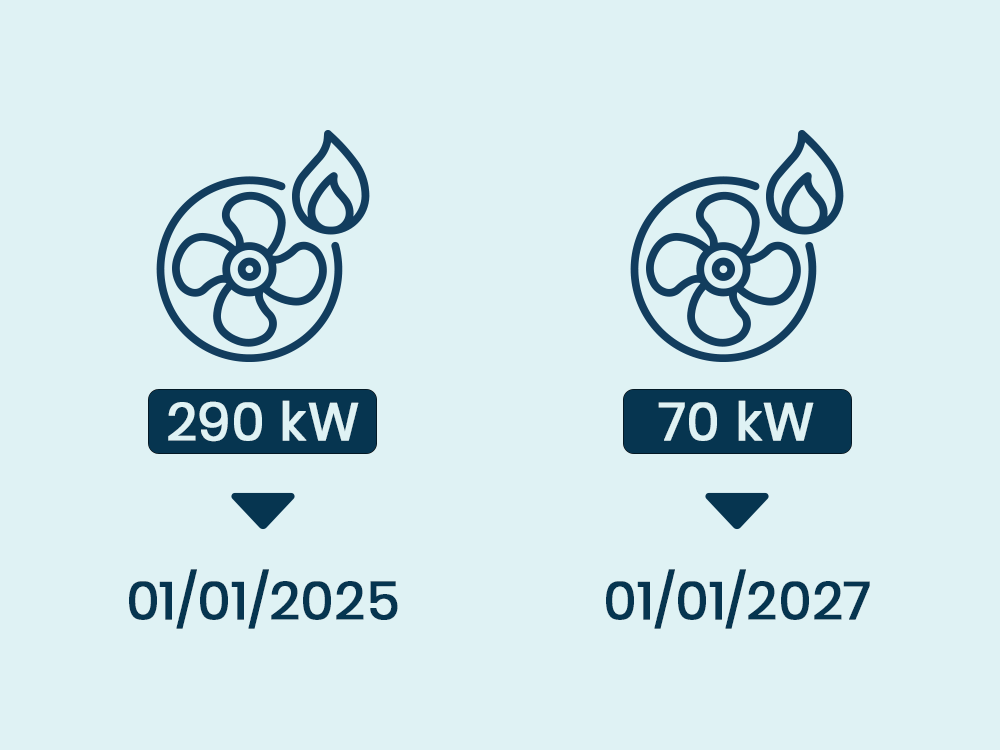Implement the
BACS decree
in your
public pool or aquatic centre
The BACS decree specifies the means to be implemented to meet the objectives of the tertiary decree.
As we approach the implementation of the tertiary decree, another regulation comes into force on 1 January 2010.er January 2025: the BACS decree. This decree concerns the automation and control system for non-residential buildings and on the automatic heat regulation.
Although it is not as well known as the tertiary decreeThe aim of the Directive is to require certain tertiary buildings to install an automation and control system, such as building management systems (BMS). This installation is crucial to achieving the energy reduction targets set by the tertiary sector decree.
The first BACS decree was published in July 2020 and concerns buildings where the heating or cooling system has a rated output of more than 290 kW. These buildings have an obligation to be implemented before 1 January 2011.er January 2025.
The text was completed in April 2023 by a second BACS decree which also involves tertiary buildings with heating and cooling systems of more than 70 kW. These have until 1 January 2010 to submit their applications.er January 2027 to comply. A new order adds a mandatory inspection of BMSs at most every five years, and within two years of the installation or replacement of a BMS-related system.


How can the BACS decree be implemented in practice in a public pool or aquatic centre?
The BACS decree proposes to implement means to meet the requirements of the tertiary decree, which aims to reduce the energy consumption of tertiary buildings with important steps in 2030 (-40%), 2040 (-50%) and 2050 (-60%). To comply with this decree, companies and local authorities must report their energy consumption data on the platform OPERAT. It is recommended to use a management platform to collect and centralise energy data to facilitate reporting.
In addition to these declarations, it is of course necessary to reduce consumption in order to achieve the objectives. In the specific case of public swimming pools and aquatic centres, Sunny Shark offers an innovative solution: Smart Pooling®. It is an automatic control of energy-consuming equipment, which does not only take into account the consumption of each equipment, but also other parameters:
- interactions between equipment
- the instructions defined by the operator
- planned activities
- attendance
- the weather
Smart Pooling® saves up to 30% of energy costs in gas and electricity for filtration, ventilation and heating equipment.
What is the best pool control solution to achieve the objectives of the BACS and tertiary decrees?
There are three techniques for controlling a public swimming pool or aquatic centre, but they do not all have the same effect in terms of energy consumption:
- Manual piloting The most energy-intensive technique, it gives the impression of "keeping control" of the equipment, but does not provide all the information needed to make the best decisions. It monopolises personnel and does not allow for anticipatory action.
- BMS (Building Management System) or BMS (Centralized Technical Management) This technique provides much better feedback. However, it requires an operator to be present at all times to analyse the data, consider the best decisions to be made and make any necessary adjustments.
- Active and anticipatory steering This innovative technique is similar to a virtual expert who is permanently present and who considers all the available information (especially that of the BMS, if the latter exists) to automatically optimise the parameters. This technique was introduced by Sunny Shark with the Smart Poolingwith an energy savings target of up to 30%.
Discover these 3 techniques in the video on the right.

